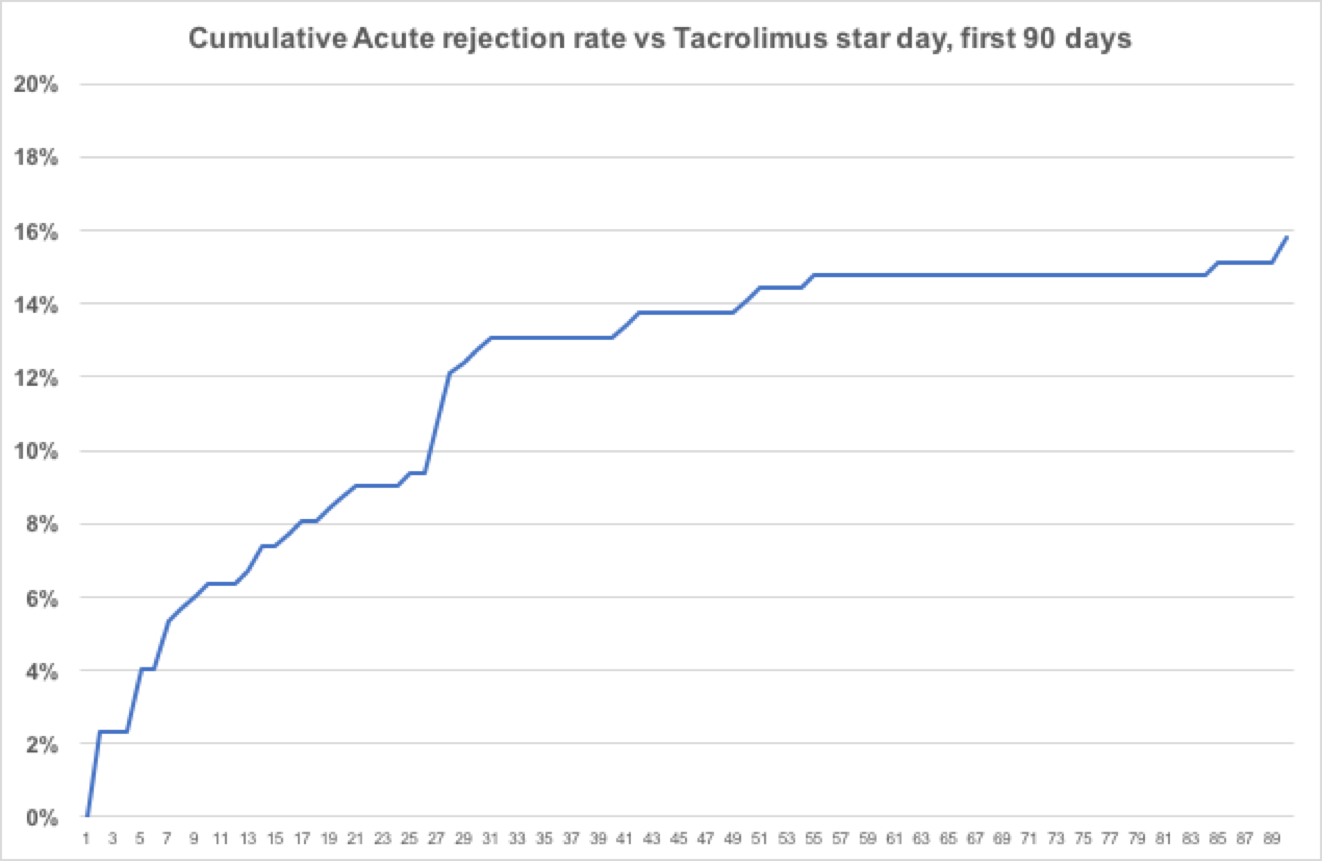Acute Rejection in Kidney Transplantation and Early Beginning of Tacrolimus
Sergio Salcedo1, Jesica Pinto1, Javier Amaya2, Andrea Garcia2.
1Nefrologia, Colombiana de Trasplantes, Bogota, Colombia; 2Investigacion, Colombiana de Trasplantes, Bogota, Colombia
Colombiana de Trasplantes.
Introduction: Kidney transplantation is the best therapy for ESRD (End-Stage Renal Disease) in terms of cost-effectiveness. The first 90 days are determinant in terms of patient and graft outcomes. Biopsy-proven Acute Rejection (BPAR) is an important complication that occurs within the first ninety days after the surgical intervention. Its relevance consists in the fact that it can severely impair renal function and can increase global health-care cost. In this study we aimed to find the relation between acute rejection before 90 days and early beginning of Tacrolimus.
Materials and Methods: We reviewed 298 patients who received Kidney Transplantation by “Colombiana de Trasplantes” between January 2015 and July 2017.
Inclusive criteria:
- Patients older than 18 years of age
- First kidney transplantation
- Immunosuppressive therapy included Tacrolimus
- Patients who completed follow-up throughout first 90 days after transplantation
Exclusive criteria:
- Pregnancy
- Graft thrombosis (arterial or venous)
- Auto-transplantation
We did bivariate analysis with chi square y t-student, we also used a logistic regression for a multivariate analysis adjusted by other relevant variables.
Results: We followed 298 patients, of which 47 (15.7%) had BPAR. We evaluated the following variables: age, time from transplant to the start of Tacrolimus therapy in days, expanded donor criteria, type of donor, cold ischemia time, warm ischemia time, PRA (panel reactive antibodies) 1 and 2, ESRD aetiology, HLA mismatch, type of induction therapy. In a ROC curve analysis, the beginning of Tacrolimus has a critical point at 6.5 days in ter
In a ROC curve analysis, the beginning of Tacrolimus has a critical point at 6.5 days in ter
ms of preventing BPAR. When tacrolimus administration started after 7 days, we observed that there were 4 times more BPAR in cases than in controls (7.2% vs 26.5%) within the first 90 days after surgery. We also observed that those who received rabbit antithymyocyte globulin (rATG) as induction therapy had a better outcome in terms of acute kidney rejection 
Conclusions: In our patients, Tacrolimus has been effective in reducing the incidence of BPAR within the first 90 days if it is administered before the 7th day after transplantation surgery. Additionally, for every day that Tacrolimus administration is delayed, there is a 2% increase in the probability of developing BPAR. We also concluded that rATG is a better option as induction therapy in our population as it reduced the risk of acute kidney rejection.
Ivan Salcedo.
